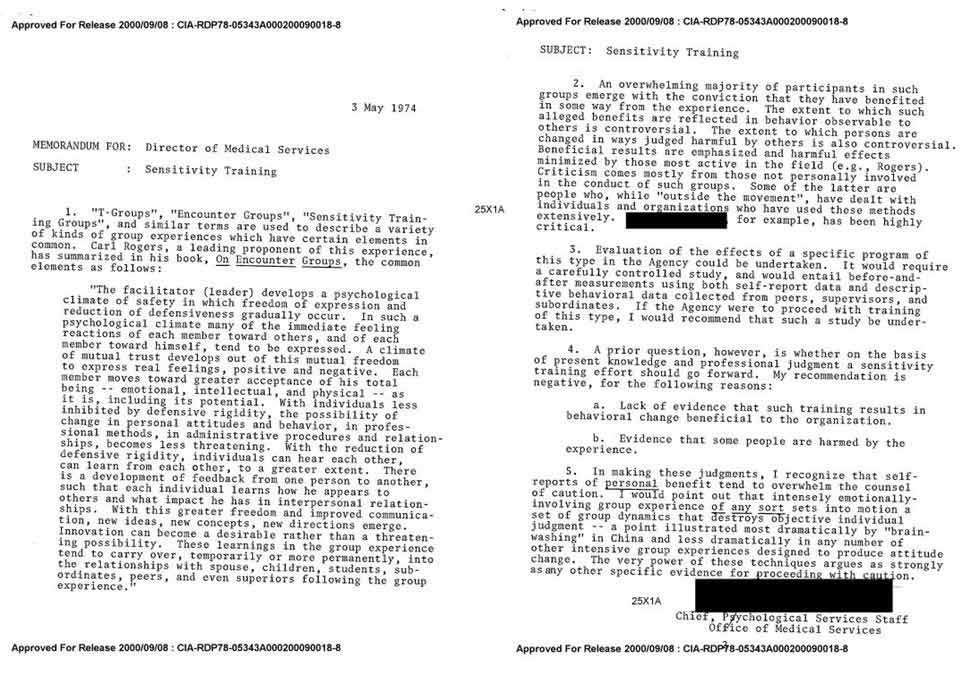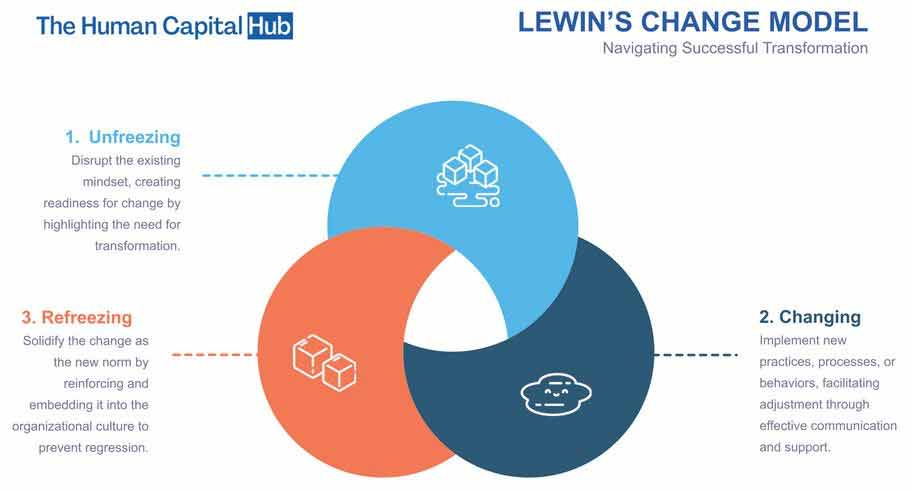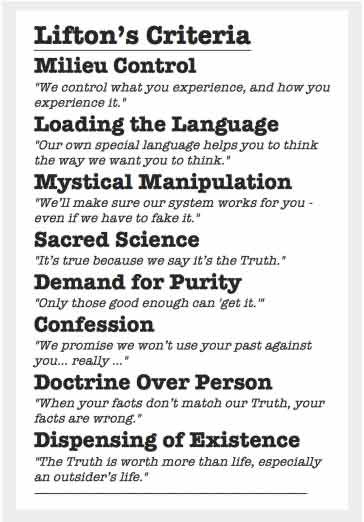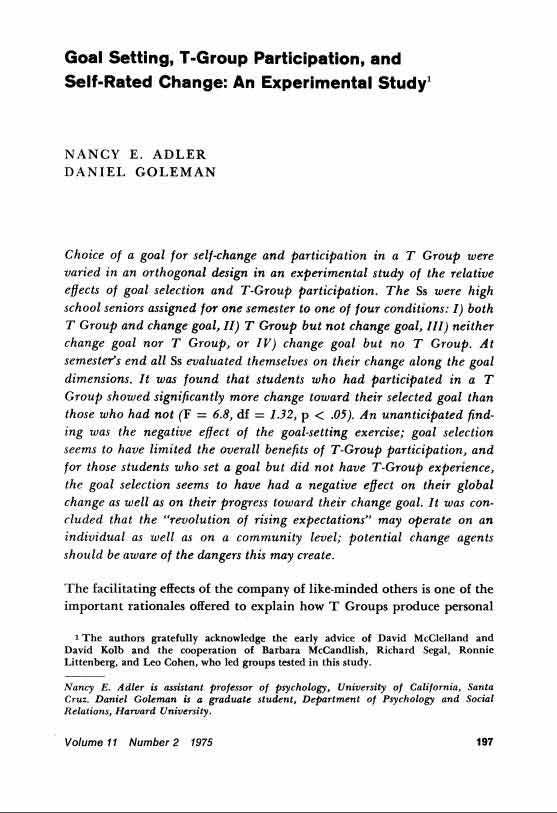How “Brainwashing” Tactics Rejected by a Chief CIA Psychologist Ended Up in Public Schools
Now, it all makes sense.
This article originally appeared on Infowars and was republished with permission.
Guest post by Lisa Logan
How did Charlie Kirk’s (alleged) shooter, Tyler Robinson, go from a regular kid raised in a conservative home in a “red state” such as Utah to someone who rejected their family’s values to the point he wanted to silence another’s speech he didn’t agree with and is now facing murder charges for killing him so he could speak no more?
The answer might lie in the reality that in Utah, schools are currently practicing behavior change tactics that were rejected by a CIA psychologist in 1974 for their ability to “destroy objective individual judgment” (Figure 1).
Controversial “sensitivity training” techniques used in popular group experiences in the 1970s to facilitate personal transformation were rebranded and embedded into every state’s education system in the early 1990’s as Social Emotional Learning (SEL). The psychological discomfort resulting from these methods now used in SEL, which deconstruct a young person’s core belief system in order to try and instill new beliefs, “primes the pump,” so to speak, for radicalization. It leaves the gutted psyches of kids like Robinson – whose foundational values has then been fractured with distrust – vulnerable to be brainwashed by collectivist theories or ideologies.
It opens the door for Critical Race & Queer Theories, Climate Change, “furry” culture– literally anything they’re exposed to – to take root, whether that be through school, social media platforms, or chat rooms.
There is no question in the author’s mind that SEL has played a much larger role in the cultural revolution as well as the mental health crisis visible in the current American landscape than anyone would care to admit. Critical Theory is the poison; SEL using psychological manipulation tactics serves as the syringe.
It is long past time for an investigation into the harm being done to children in the name of social emotional learning.
The CIA Memorandum
“A prior question, however, is whether on the basis of present knowledge and professional judgement a sensitivity training effort should go forward. My recommendation is negative…I would point out that intensively emotionally-involving group experience of any sort sets into motion a set of group dynamics that destroys objective individual judgement – a point illustrated most dramatically by “brainwashing” in China and less dramatically in any number of other intensive group experiences designed to produce attitude change. The very power of these techniques argues as strongly as any specific evidence for proceeding with caution.” – CIA Memorandum

What the Chief of Psychological Services Staff at the Office of Medical Services at the CIA was being asked to evaluate in his 1974 response was whether or not the Agency should utilize a type of group experience that had recently exploded in popularity and had certain elements in common known as “T-Groups”, “Encounter Groups,” and “Sensitivity Training Groups.”
The Chief uses an excerpt from a book called On Encounter Groups written by a proponent of these methodologies, psychologist Carl Rogers, to describe these elements:
“The facilitator (leader) develops a psychological climate of safety in which freedom of expression and reduction of defensiveness gradually occur. In such a psychological climate many of the immediate feeling reactions of members toward others, and of each member toward himself tend to be expressed. A climate of mutual trust develops out of this mutual freedom to express real feelings, positive and negative. Each member moves toward greater acceptance of his total being – emotional, intellectual, and physical – as it is, including its potential. With individuals less inhibited by defensive rigidity, the possibility of change in personal attitudes and behavior, in professional methods, in administrative procedures and relationships, becomes less threatening. With the reduction of defensive rigidity, individuals can hear each other, can learn from each other to a greater extent. There is a development of feedback from one person to another, such that each individual learns how he appears to others and what impact he has in interpersonal relationships. With this greater freedom and improved communication, new ideas, new concepts, new directions emerge. Innovation can become a desirable rather than a threatening possibility. These learnings in the group experience tend to carry over, temporarily or more permanently, into relationships with spouse, children, students, subordinates, peers, and even superiors following the group experience.”
Unfreezing – Changing – Refreezing
These methods of group dynamics were originally tested and refined at the National Training Laboratories, a project of the National Education Association (NEA) and Office of Naval Research which began in 1947 based on the ideas of a German social psychologist named Kurt Lewin. His “Unfreezing, Changing, Refreezing” Model posited that the deep-seated values, mindsets and behaviors of individuals could be challenged and transformed through the influence that their environment – in this case, facilitated small-group experiences using specific Gestalt-type psychological techniques – had upon them (Figure 2).

Unfreezing occurs through creating a climate where freedom of expression is encouraged. A facilitator engages participants to step out of their comfort zone and to believe they can share anything – even sensitive, personal information or how they feel about other participants – in the group. These acts of vulnerability foster a sense of closeness and belonging between group members so they feel it is safe to let their guard down and trust new ideas presented within their discussions.
Changing occurs through feedback between members of the group. Essentially the goal is to interrogate and break down the worldview of the individual members of the group through that freedom of expression with the intent of creating a new unifying worldview the whole group agrees upon. The feedback can be positive or negative depending on how willing individual group members are to assimilate to the emerging view of the group.
Refreezing happens when the individual has abandoned their original worldview and adopts/solidifies the one the group has synthesized through their exchange of ideas.
These tactics sound eerily similar to Robert Lifton’s Eight Criteria for Thought Reform (Figure 3), written in 1962, to describe the characteristics “totalistic” groups use to dismantle a person’s sense of self and reshape their beliefs to gain total control over members’ thoughts and behaviors. Lifton interviewed American servicemen who had been prisoners of war (POWs) during the Korean War and later priests, students, and teachers who had been held in prison in China after 1951, as well as 15 Chinese who had fled after having been subjected to indoctrination in Chinese universities. Lifton’s Eight Criteria has been also used to describe the techniques used by cults and multi-level marketing companies to onboard new members; in other words, brainwashing.

A Common Ancestor
Lewin’s Change Model also closely resembles how “circle time exercises” are conducted in Social Emotional Learning (SEL) lessons.
That is not coincidental.
Daniel Goleman, a fellow at the Fetzer Institute, helped create the organization CASEL and launch the field of SEL with others in the Working Group on Contemplative Mind in Society, with his book Emotional Intelligence (Bantam, 1995). In 1976, as a graduate student, based on his research on T-Groups with students, Goleman co-authored a paper for the journal of the National Training Laboratories (Figure 4). He concluded that the self-awareness and social skills fostered through the pressure and accountability (feedback-rich) environment of a T-Group could contribute to goal-setting and achievement.

It would certainly be likely that Goleman drew from the same methods employed by the T-Groups from the NTL to create what is now known today as SEL. It is also possible that since its inception, SEL – which is implemented in schools for use with all children, whether or not they need it – has been causing the same psychological and emotional strain on children that it was having on adults who underwent these group experiences.
In the setting of an ongoing mental health crisis among the youth, could it be the “more SEL” solution is actually the cause?
The “T” in T-Groups Should Stand for Trauma instead of Training
The Chief CIA Psychologist notes in his 1974 memorandum that the majority of participants in these group sessions emerge with the conviction that they have benefited in some way. He also states that these changes and the observable behavior that accompanies them are highly controversial and that “beneficial results are emphasized and harmful effects minimized by those most active in the field (e.g., Rogers).”
Why was this so controversial?
At that time, these experimental self-help groups and experiences were all the rage. People were flooding the famous Esalen retreat center in Big Sur to participate in Encounter Groups, major businesses like General Foods and American Airlines were hiring consultants trained in conducting T-Groups to facilitate sensitivity training with their employees and management. Parenting groups, boarding schools, and even the military were trying the new group dynamics fad. Some experienced what they felt was radical personal transformation. For others, however, the psychological methods employed to make a participant vulnerable toward change in the group experience had devastating effects.
A 1971 New York Times article titled Encounter Groups Up Against the Wall by Bruce L. Maliver, a conventionally trained psychotherapist, tells the story of an acquaintance, “Julia,” who “killed herself by swallowing several dozen sleeping pills” three months after beginning group encounter experiences. Maliver points to the dangers of experimenting in group dynamics especially if leaders/facilitators are not professionally trained, and if the atmosphere does not contain “confidentiality, non-pressure and, above all, respect for the individual’s right to maintain his own lifestyle or social adaptation if he so chooses.” A 1973 Stanford University study on the broad range of techniques used in encounter groups concurred: “Encounter groups present a clear and evident danger if they are used for radical surgery in which the product will be a new man.”
Trouble with “Refreezing”
A “new man” with new solidified perspectives, though, has always been the goal of T-Groups and the Unfreezing, Changing, Refreezing model of Kurt Lewin. Except, as Art Kleiner, who documented the history of the NTL laboratories admitted in his book The Age of Heretics(Jossey-Bass, 2008), “The NTL people didn’t quite understand how to refreeze.” Individuals who endured a complete tearing down of their beliefs through the unfreeze and changing process were then left to languish in a broken heap of cognitive dissonance (a psychological state of discomfort, anxiety, and guilt resulting from a person holding two or more conflicting beliefs, attitudes or behaviors). This led to what that Stanford University study called casualties, defined as an individual who experienced an “enduring, significant, negative outcome which was caused by their participation in the group.”
“This profession was not regulated the way that medicine or law would be regulated,” Kleiner stated in a 2022 interview with Aiden McCullen . It was “messing around with organizational dynamics in ways that really affected people. So, for example there would be T-Groups after which people would commit suicide. There would be T-Groups in which people would break down and be ostracized from the company afterwards and have to resign” (or worse).
Kleiner tells a story in his book how one manager of a testing laboratory at General Foods committed suicide after a T-Group session wherein engineers that worked with him openly berated him. The man’s family sued, and the NTL settled out of court. By 1967, it was the liability of the frequency of such incidents that caused corporations to start phasing out their use of T-Groups for human relations training, though they are still used today in corporate training practices and especially diversity (DEI) training.
Concerns about the potential harm caused by these pervasive sensitivity training groups prompted a Congressional hearing in 1969. It is unconscionable to think that these practices could be renamed and put into schools 20+ years later as Social Emotional Learning (SEL). Yet, that’s what happened.
SEL is “Bad Therapy” in Schools
In her book Bad Therapy (Sentinel, 2024), Abigail Shrier describes a 5th grade SEL “circle time” or “check-in” exercise not unlike the excerpt from the CIA Memorandum of Rogers’ Encounter Groups where the group experience begins with open expression encouraged by a facilitator. A simple question prompted by the teacher – What is something that is making you really sad right now? – resulted in an intense sharing of personal traumas that left kids upset and disordered, and ultimately, unready to learn. When it was his turn to speak, one boy began by speaking about his father’s new girlfriend. That’s when things fell apart.
“All of a sudden, he just started bawling. And he was like, ‘I think that my dad hates me. And he yells at me all the time’…Another girl announced her parents had divorced and burst into tears. Another said she was worried about the man her mother was dating. Within minutes, half of the kids were sobbing. It was time for the math lesson; no one wanted to do it. It was just so sad, thinking that the boy’s dad hated him. What if their dads hated them, too?”
This “group sharing” is a sensitivity training tactic to create trust and belonging within group members. It supposedly creates an environment of safety for new ideas can be discussed that include all perspectives, but it can also result in trauma-bonding and identity/value-shattering that can be just as damaging (if not more) to kids as it is for adults participating in T-Groups. Shrier writes that “word spread throughout the school about the AA meeting-style breakdown. Except that this AA meeting featured elementary school kids who then ran to tell their friends what everyone else had shared.”
Conditions for a Traumatizing T-Group
No confidentiality. Check. An atmosphere of pressure. Check. Facilitator (in this case, a math teacher) not professionally trained. Check. What about Maliver’s “respect for the individual’s right to maintain his own lifestyle or social adaptation if he so chooses” and Stanford’s warning that these group experiences “present a clear and evident danger if they are used for radical surgery in which the product will be a new man”? SEL habitually and purposefully crosses those lines, too. The latest evolution, Transformative SEL, “embeds kids’ soul searching in straight-up Marxism, according to a bracingly honest admission by a California town’s department of education,” Shrier reports. The now defunct link she cites from Sonoma County’s Office of Education accessed on August 16, 2023, stated “Transformative SEL is a form of SEL aimed at redistributing power to promote social justice through increased engagement in school and civic life.”
Transformative SEL operates much like Lifton’s Eight Criteria, using Maoist-style “struggle sessions” wherein one must confess their “white supremacy” and “implicit bias,” whilst they’re encouraged to question and abandon (“unfreeze”) any prior foundational beliefs about America’s merit-based economic system. The pressure of group conformity coupled with the criticism of core beliefs leads the participant to adopt a new set of values (“change”) – that America’s systems and institutions should be torn down and replaced by a more “equitable” distributive system, such as socialism or Communism. This results in a state of perpetual cognitive dissonance for the targeted individual, left struggling to “belong” in their own family, who believe otherwise. The family of origin they once trusted becomes suspect based upon the child’s newly agreed-to values with the SEL group. The child must now maintain a dual shadow – or fracturing of – identity. This trauma alone can cause a mental health crisis in the healthiest of individuals. The “release” from this crisis of cognitive dissonance might take the form of “compelled action.” SEL lessons promote the idea that it is wrong to be a bystander; one must become an “upstander,” fighting perceived dangerous “bullies” as an ally. In Tyler Robinson’s case, being an upstander meant (allegedly) murder.
How did we get here America? How do we have so many radicalized youth who hate America, its Constitution, and what it stands for? We should start by asking what mechanisms are preventing families from passing down their love of country to their children, and SEL and all its iterations should be examined through a full audit for its role in that process.
It’s time to expel SEL from our schools.
Lisa Logan is host of the YouTube Channel Parents of Patriots and author of the Substack Education Manifesto. You can find her on X at @iamlisalogan.
Copyright 2025 Infowars



Great article. It also goes beyond the CIA. The brainwashing and propaganda have been occurring for longer than most of us realize.
My wife and I have been researching this for years. My in-laws have worked as a nurse and a doctor in the holistic field for over 15 years. They were the influence that first got us to think differently and start digging deeper. They continued to tell us how allopathic medicine is Rockefeller medicine. Don’t get me wrong there is a time and place for Western medicine, but not at the magnitude people rely on it today. We rejected their “ideas” for a long time, until one day we finally applied them to our lives. We haven’t looked back since. I can’t believe we ever blindly trusted our government the way we once did.
The Rothschilds and Rockefellers have been displaying their evil acts for generations, patiently planning their takeover for a very long time. We began tying the Spanish Flu into vaccinations after we watched everything with COVID unfold in 2020. I’m sure many others have too, only to be silenced for it. As we watched COVID parallel to a historic pandemic, the links to the Spanish Flu became impossible to ignore. Here’s a timeline we worked on. I am not saying everything is 100% definitive. As always, do your own research.
1. Unusual Mortality Pattern
• Normally, influenza kills the very young and the very old.
• In 1918, it killed primarily healthy young adults, forming a “W-curve” of mortality that still perplexes scientists and doctors to this day.
• Fear campaigning and propaganda during the Spanish Flu kept the public in a state of panic, much like what we saw repeated during COVID.
2. Vaccination Link
• Troops at Fort Riley, Kansas, were given an experimental bacterial meningitis vaccine produced by the Rockefeller Institute in early 1918, just before the first wave of Spanish Flu deaths began.
• Millions of soldiers and civilians worldwide were also injected with other experimental vaccines during this period, often in unsanitary conditions.
• Many researchers have questioned whether these mass vaccination campaigns played a direct role in triggering the immune overreactions and unusual mortality patterns seen during the pandemic.
3. Parallel to COVID
• A century later, the same tactics were used: media panic, rushed vaccines, censorship, and suppression of dissenting doctors.
• The Rockefellers’ influence on modern medicine and pharmaceutical control is undeniable.
Timeline Recap
• 1901–1903 Rockefeller Institute for Medical Research founded, focusing heavily on vaccines and infectious disease.
• 1913 Rockefeller Foundation officially established, funding global health projects and reshaping medical education.
• 1918 Spanish Flu outbreak overlaps with widespread vaccination campaigns among troops and civilians.
• 1920s Rockefeller money entrenches pharmaceutical-driven medicine as the standard in the U.S. and abroad.
• 2020 COVID pandemic mirrors the same tactics: fear campaigns, mass vaccination, silencing of dissent, and profiteering by pharma giants.
The Rockefellers didn’t just push vaccines and pharmaceuticals. They systematically embedded their influence into medical schools, universities, and public health institutions through the Flexner Report, which forced out natural and holistic practices in favor of a drug-based system. Their foundation money funded research labs, government agencies, and even international health organizations, ensuring that future generations of doctors were trained under their model. What started with the Rockefeller Institute and Foundation became the framework for the entire medical-industrial complex we see today.